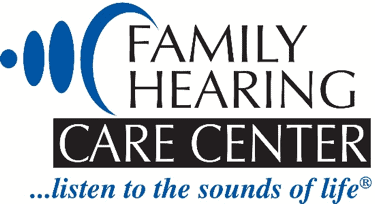
Understanding Hearing Loss: Prevention, Diagnosis, and Management
Hearing loss is a prevalent and often misunderstood condition that affects millions of people worldwide. It can have a profound impact on one’s quality of life, relationships, and overall well-being. As hearing professionals, we aim to shed light on the latest advancements in hearing loss prevention, diagnosis, and management while emphasizing the significance of early detection. By staying informed about these developments, both patients and professionals can work together to tackle this growing health concern.
Understanding Hearing Loss
Hearing loss can be classified into two main categories: conductive and sensorineural. Conductive hearing loss is often related to issues with the outer or middle ear, such as earwax blockage or ear infections. On the other hand, sensorineural hearing loss typically occurs due to damage to the inner ear or auditory nerve. Age-related hearing loss (presbycusis) and noise-induced hearing loss are two common types of sensorineural hearing loss.
Prevention of Hearing Loss
Protective Measures:
Prevention is always better than cure. The most effective way to prevent hearing loss is to protect your ears from loud noises. Modern advancements in hearing protection have led to the development of innovative devices such as noise-canceling headphones and custom-fitted earplugs. These tools can significantly reduce the risk of noise-induced hearing loss.
Safe Listening Practices:
Education about safe listening practices is crucial. Encouraging the use of volume-limiting features on personal audio devices, maintaining safe sound levels at concerts and other events, and promoting regular breaks from noisy environments can all contribute to hearing preservation.
Occupational Safety:
For individuals working in high-noise environments, adhering to occupational safety guidelines is essential. Employers should provide hearing protection and ensure that employees are adequately trained in its use. Advances in occupational health and safety regulations have contributed to reducing workplace-related hearing loss.
Regular Hearing Checkups:
Routine hearing evaluations can help identify potential issues early. If hearing loss is detected in its early stages, steps can be taken to mitigate its progression and manage it effectively.
Diagnosis of Hearing Loss
Audiometry:
Audiometric tests, including pure-tone audiometry, are the gold standard for diagnosing hearing loss. These tests provide a comprehensive evaluation of a person’s hearing abilities, helping professionals determine the type and degree of hearing loss.
Otoacoustic Emissions (OAE):
OAE testing measures the sounds produced by the inner ear when it is stimulated by a sound. It is a non-invasive method used to identify cochlear function and is often used in newborn hearing screenings.
Auditory Brainstem Response (ABR):
ABR tests measure the brain’s response to auditory stimuli. They are especially useful in diagnosing hearing loss in infants or individuals who are unable to provide reliable responses during conventional audiometry.
Advanced Imaging Techniques:
In cases where hearing loss is suspected to be due to structural abnormalities or tumors, advanced imaging techniques such as MRI or CT scans may be employed to visualize the ear’s internal structures.
Management of Hearing Loss
Hearing Aids:
Recent advances in hearing aid technology have led to smaller, more discreet devices with improved sound quality. Many hearing aids now come equipped with features like Bluetooth connectivity, allowing for seamless integration with smartphones and other electronic devices.
Cochlear Implants:
For individuals with severe to profound sensorineural hearing loss, cochlear implants are a transformative solution. These surgically implanted devices stimulate the auditory nerve directly, bypassing damaged hair cells in the inner ear.
Assistive Listening Devices:
Various assistive listening devices, such as FM systems and captioning services, can complement the use of hearing aids and cochlear implants, ensuring clear communication in various situations.
Auditory Training and Rehabilitation:
Audiologists can provide auditory training and rehabilitation programs to help individuals adapt to their hearing loss and improve their communication skills. These programs often include strategies for effective listening and communication.
The Importance of Early Detection
Early detection of hearing loss is pivotal in preventing its adverse consequences. Unaddressed hearing loss can lead to social isolation, depression, cognitive decline, and even an increased risk of falls. It can affect one’s career, relationships, and overall quality of life. By identifying hearing loss early, individuals can take proactive steps to manage their condition, improving their chances of maintaining an active and fulfilling life.
Future Interventions
The future of hearing loss management looks promising, with ongoing research and development in various areas. Here are some potential futuristic interventions:
Gene Therapy:
Research into gene therapy for hearing loss is advancing, with the potential to address congenital and genetic forms of hearing loss.
Hair Cell Regeneration:
Scientists are exploring ways to regenerate damaged hair cells in the inner ear, which could lead to the restoration of hearing in some cases.
Pharmaceutical Treatments:
Pharmaceutical interventions targeting the prevention or treatment of hearing loss are being investigated. These treatments may be used in conjunction with other interventions to enhance their effectiveness.
Hearing loss is a multifaceted condition that can have far-reaching consequences. However, by staying informed about the latest advancements in prevention, diagnosis, and management, both patients and professionals can work together to address this issue. Early detection is paramount, as it allows for timely interventions that can significantly improve an individual’s quality of life.
As hearing professionals, our goal is to advocate for hearing health and promote the importance of regular hearing checkups. By fostering a greater understanding of hearing loss, its prevention, and available management options, we can empower individuals to take control of their hearing health and lead fulfilling lives, regardless of their hearing abilities.
